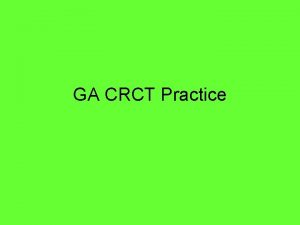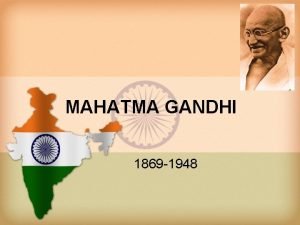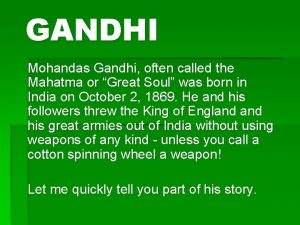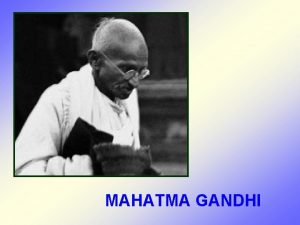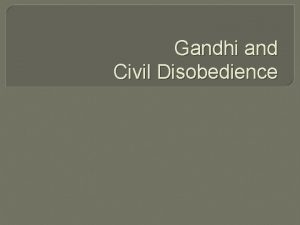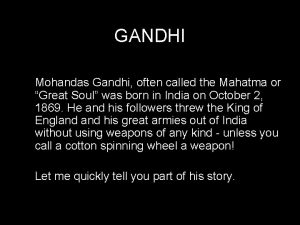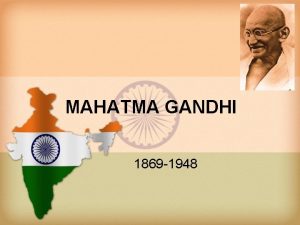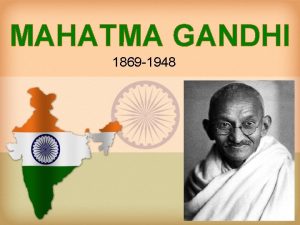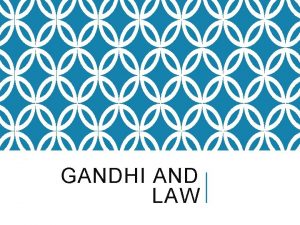Mohandas Gandhi The theory of Nonviolence Gandhi found














- Slides: 14

Mohandas Gandhi The theory of Nonviolence

Gandhi found a different way to change the world

“Generations to come will scarce believe that such a one as this--ever in flesh and blood--walked upon this earth” Albert Einstein

Before Gandhi: India Summary • A history of being ruled by “outsiders” • Strong religious tension between dominant Hindu population and Muslims • Did not truly push for independence until after World War I • Amritsar Massacre was the turning point in independence movement

Amritsar Massacre

Mohandas Gandhi • Hindu, Born in India 1869, Died 1948 – 2 nd Highest Caste • Earned a law degree in England (1891) • Worked in South Africa from 1894 -1914 – Protested racial discrimination using non-violence • Returns to India in 1915 – Called Mahatma meaning “Great Soul”

Gandhi’s vision for change • Gandhi spent 2, 338 days in jail during his lifetime • Argued to use non-violent resistance (civil disobedience) to achieve change • Satyagraha: principle which meant “truth-force” was the secret power of non-violence

Primary Source • Gandhi on Non-Violent Protest (1919)

“I believe that non-violence is infinitely superior to violence, forgiveness is more manly than punishment”

Gandhi’s Influence • 1920 Indian National Congress endorses civil disobedience (non-violence) as means to achieve independence • 1924 Gandhi assume the Presidency of the Indian National Congress • Gandhi never OFFICIALLY held political office!

The British Viceroy’s view (from a meeting with Gandhi in 1921) • “There is no hesitation about him and there is a ring of sincerity in all that he utters…his religious views are…that non-violence and love will give India its independence and enable it to withstand the British Government” “I must confess that I found it difficult to understand his practice of them in politics…”

The Indian view • “How could we pull India out of this quagmire of poverty and defeatism…and then Gandhi came. He was like a powerful current of fresh air…He did not descend from the top; he seemed to emerge from the millions of India” • Gandhi was a common man with an uncommon message: “be not afraid”

Primary Source • Gandhi: Indian Home Rule – Written in 1938

French Revolution World War I Russian Revolution World War II • What do these events have in common? • How can you affect change in the world?
 The solid portion of a comet phrase or clause
The solid portion of a comet phrase or clause Which phrase best describes the focus of ecology? *
Which phrase best describes the focus of ecology? * Gandhian philosophy of wealth management
Gandhian philosophy of wealth management Hát kết hợp bộ gõ cơ thể
Hát kết hợp bộ gõ cơ thể Lp html
Lp html Bổ thể
Bổ thể Tỉ lệ cơ thể trẻ em
Tỉ lệ cơ thể trẻ em Voi kéo gỗ như thế nào
Voi kéo gỗ như thế nào Tư thế worm breton
Tư thế worm breton Hát lên người ơi
Hát lên người ơi Kể tên các môn thể thao
Kể tên các môn thể thao Thế nào là hệ số cao nhất
Thế nào là hệ số cao nhất Các châu lục và đại dương trên thế giới
Các châu lục và đại dương trên thế giới Cong thức tính động năng
Cong thức tính động năng Trời xanh đây là của chúng ta thể thơ
Trời xanh đây là của chúng ta thể thơ

